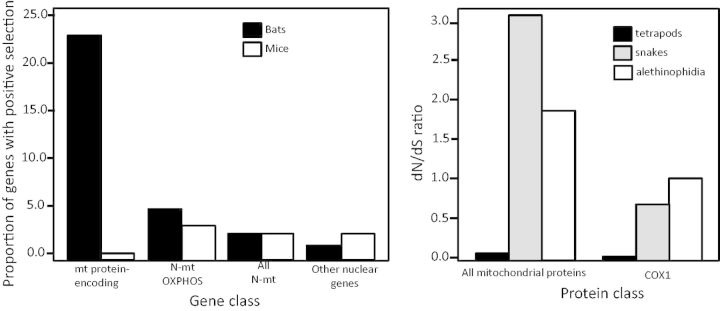Fig. 4.
The role of genetic changes to respiratory chain function in major adaptive radiations. In the transition from terrestrial locomotion to flight that accompanied the evolution of bats, there was strong selection for changes to the functional capacity of the respiratory chain to allow for increased ATP production to power flight muscles (Shen et al. 2010). In bats, 23% of the mt genes and about 5% of N-mt genes that code for OXPHOS proteins show evidence of positive selection, a proportion that is much higher than for non-OXPHOS N-mt genes or non-mt nuclear genes (left). Moreover, these rates of positive selection on OXPHOS genes are significantly higher in bats than in mice (left). Similarly in the evolution of snakes, nonsynonymous changes in mt OXPHOS genes, and particularly in cytochrome c oxidase subunit 1, suggest that a major shift in respiratory function accompanied the major shifts in body plan and prey consumption (Castoe et al. 2008) (right). The Alethinophidia lineage is the clade within all snakes with the greatest adaptive shifts. Deducing whether respiratory chain innovation leads or follows adaptive radiation will be a fascinating focus of future studies. Left panel redrawn from Shen et al. (2010) and right panel drawn from data in Castoe et al. (2008).

